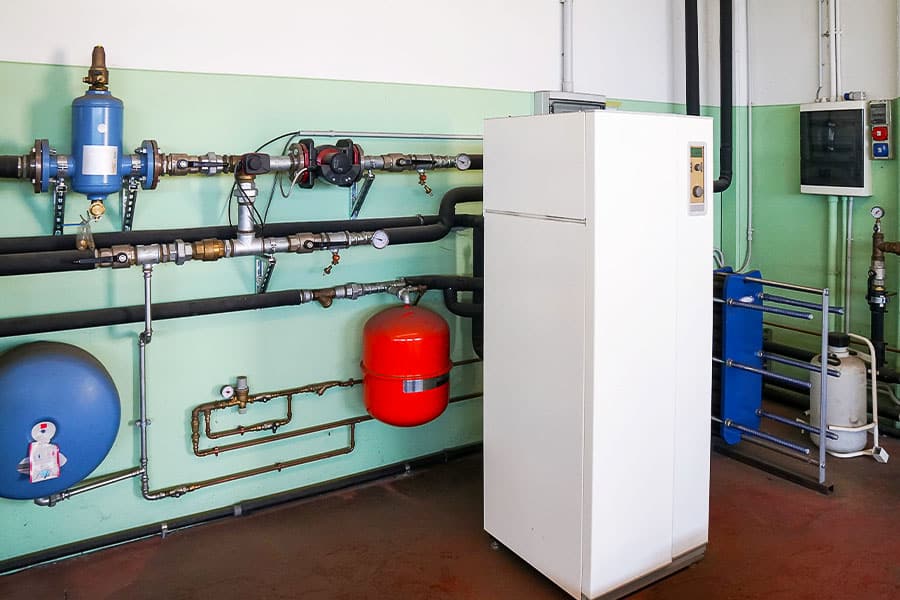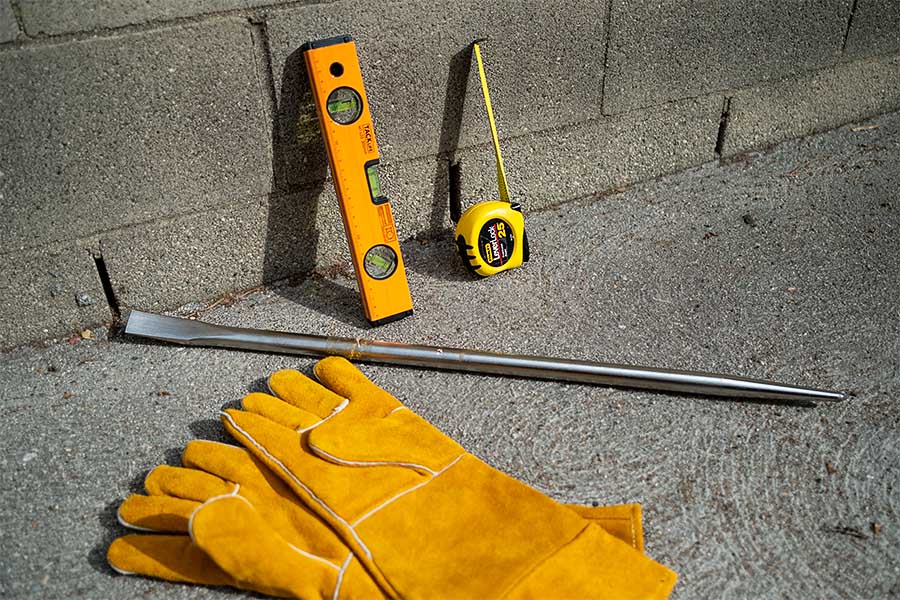One of the first acts of the Biden administration was to return the United States to the Paris Climate Agreement and its former commitments to reducing the nation’s carbon footprint in response to the growing threats posed by climate change. That will almost certainly mean rekindled interest—and investment—in renewable energy sources.
It could also be a renaissance for solar and wind energy. But Kathy Hannun, co-founder and president of Upstate New York-based Dandelion Energy, believes the timing is perfect for one of the least exploited green energy sources: geothermal energy.
HVAC subcontractors willing to venture outside their comfort zones could share in the opportunity.
Dig deep enough into the Earth and you’ll find superheated rock that, in theory, could provide essentially free energy to drive turbines and generate vast amounts of electricity. That’s one vision of the opportunity in geothermal. But it’s not Hannun’s vision.
For Dandelion, the sweet spot is much closer to the surface, and the objective is not to generate electricity, but to heat and cool suburban homes using a “ground source heat pump,” instead of a conventional oil- or gas-burning furnace.
“There’s an opportunity to create millions of jobs in local communities—good, blue collar jobs installing heat pumps,” Hannun said. “We can upgrade our infrastructure, improve our standards for building efficiency and reduce our carbon emissions. A lot of what we’re doing aligns closely with the vision that President Biden has put forth and the trends that a new administration will accelerate.”
Hannun, a civil engineer with a graduate degree in computer science, believes other renewable energy technologies will benefit as well. Geothermal is complementary to solar energy, she explained, because solar can replace fuel oil, propane or gas to power the heat pump.
Free energy underground
Geothermal energy takes advantage of the fact that no matter what is going on at the surface level, a few feet below grade the ground maintains a consistent temperature—generally around 55°F—all year round. (It’s actually stored solar energy.)
A heat pump is a device to move heat from lower to higher temperature environments. If your home is heated and cooled geothermally, you will have a ground loop (essentially a circuit of plastic pipe installed in a borehole underground) connected to the heat pump in the basement.
[SEE ALSO: These State Ballot Initiatives Carry Big Implications For Construction]
The heat pump circulates air through the ground loop. In summer, its objective is to push the hot air from the house into the loop to cool it; in winter, the goal is to bring the cold air up to ground temperature. The heat pump is powered electrically, and it raises the temperature of the circulating air so that it can be used to heat or cool the ambient air in the house.
A conventional gas furnace uses the heat from burning fuel to warm the air directly. By contrast, a heat pump uses most of its power to move air through a compressor—air that is already close to the ambient temperature you typically want. So the way the heat pump uses energy is much more efficient than the traditional furnace, about four times as fuel-efficient for heating, and about twice as efficient as an air conditioner for cooling, Hannun said.
The challenge with geothermal energy until recently has been the up-front investment in the installation. “Ground source heat pumps haven’t gotten the mind share because they have been wildly expensive in the past,” Hannun said. “They’ve been caught in a vicious cycle—this is a niche technology that hasn’t attracted the investment required to develop it into a mass-market option. Every installation has been handcrafted.”
Dandelion, a start-up spun out of X, the innovation lab of Google’s parent company, Alphabet, is trying to optimize the software component and improve its understanding of the way the Earth transfers heat, so that it can minimize the size, complexity and cost of the ground loop. The goal is to have a reproducible, standardized approach to installation, so that it doesn’t have to be customized for each home.
Dandelion is focused not only on making geothermal viable for new homes, but also for retrofitting to existing homes. The goal is for the homeowner to see geothermal as a normal, competitive alternative to their existing oil burner or, eventually, their gas furnace.
A smaller footprint
An obvious difference between geothermal and more conventional HVAC technologies is the need to drill a borehole on-site. One of Dandelion’s first priorities was to develop a smaller drilling rig that can fit into a typical suburban yard. It’s on tracks, with a very small turning ratio. The supporting equipment—power, water, compressor, etc.—stays on Dandelion’s truck, on the street.
“Reducing the scale of the equipment was crucial,” Hannun said, “because half of our customers have yards that are too small for a conventional drilling rig. We doubled the addressable market by having appropriately sized drilling equipment.”
Dandelion developed its own ground loop design software, taking advantage of the engineers’ understanding of how the soil at various locations conducts and exchanges heat with the ground loop. It’s a function of the local geology and how much water is present in the soil.
‘There’s an opportunity to create millions of jobs in local communities—good, blue collar jobs installing heat pumps.’
Kathy Hannun, co-founder and president of Upstate New York-based Dandelion Energy
In a large commercial installation with hundreds of ground loops, the vendor would perform a thermal conductivity test, to see how well the ground conducts heat, and then use that value to size the ground loops. “In residential installations, we are only installing one or two ground loops; it’s impractical to do a test bore,” Hannun said. “We use a conservative rule of thumb based on what we know of the local geology.”
Dandelion has done enough installations to have reliable data from monitoring the performance of its existing heat pumps to infer the soil conductivity in a new location.
“For example, the ground in Westchester County [just north of New York City] is about 30% more conductive than farther north around Albany, because Westchester has much more bedrock,” Hannun said. “That allows us to install the right amount of ground loop for each location. The experience and the monitoring data we’ve been able to collect has allowed us to go from an average of two boreholes per home to one.”
Data-driven
When expanding into a new region where Dandelion has no first-hand ground conductivity data, installers begin with a conservative estimate based on public information on the local geology.
“You know the thermal conductivity of given rock types,” Hannun said. “It helps to know how much water is there, because water increases the conductivity. We start out assuming no water when we install the ground loop in a new location. As we acquire larger data sets for areas where we have done a lot of installations, we can take advantage of the better conductivity if we know the water will be there.”
Like many areas of technology innovation, the geothermal energy business is intensely data-driven. Ground loop design optimization can improve system performance enough to save the homeowner thousands of dollars in operating costs.
Dandelion has been experimenting with ground loop designs—the shape of the plastic pipe that is installed in the ground, for instance—to expose more surface area to the soil to improve heat exchange. That optimization has allowed the designers to shave as much as 15% off the size and depth of loop (typically equating to about $2,000 in cost).
What type of house is best suited for geothermal energy?
For now, Hannun said, the technology is best adapted for houses with heating ducts, as opposed to radiators. “Today, our heat pumps are designed to feed into ductwork,” she said. “Radiators contain water that is relatively hot, and today’s heat pumps are best adapted to supplying air at a lower temperature. But, eventually, we will have a product for homes with radiators.”
Dandelion is now working with Lennar, one of the largest homebuilders in the country. “They’re interested in geothermal because they don’t want to get caught in a market where they can’t install gas anymore,” Hannun said.
Dandelion has a hybrid business model. It handles all the drilling, but contracts out some of its heat pump installations. It is likely to contract out more of the installation work in the future, Hannun said.
“The way we finance gas infrastructure, pushing natural gas through a pipeline, anticipates a usable lifetime of about 80 years,” she said. “That’s the physical life of the asset. But people are starting to realize that if we are going to achieve any of our commitments as a country to reducing carbon emissions, we won’t be able to operate that pipeline for that long.”












